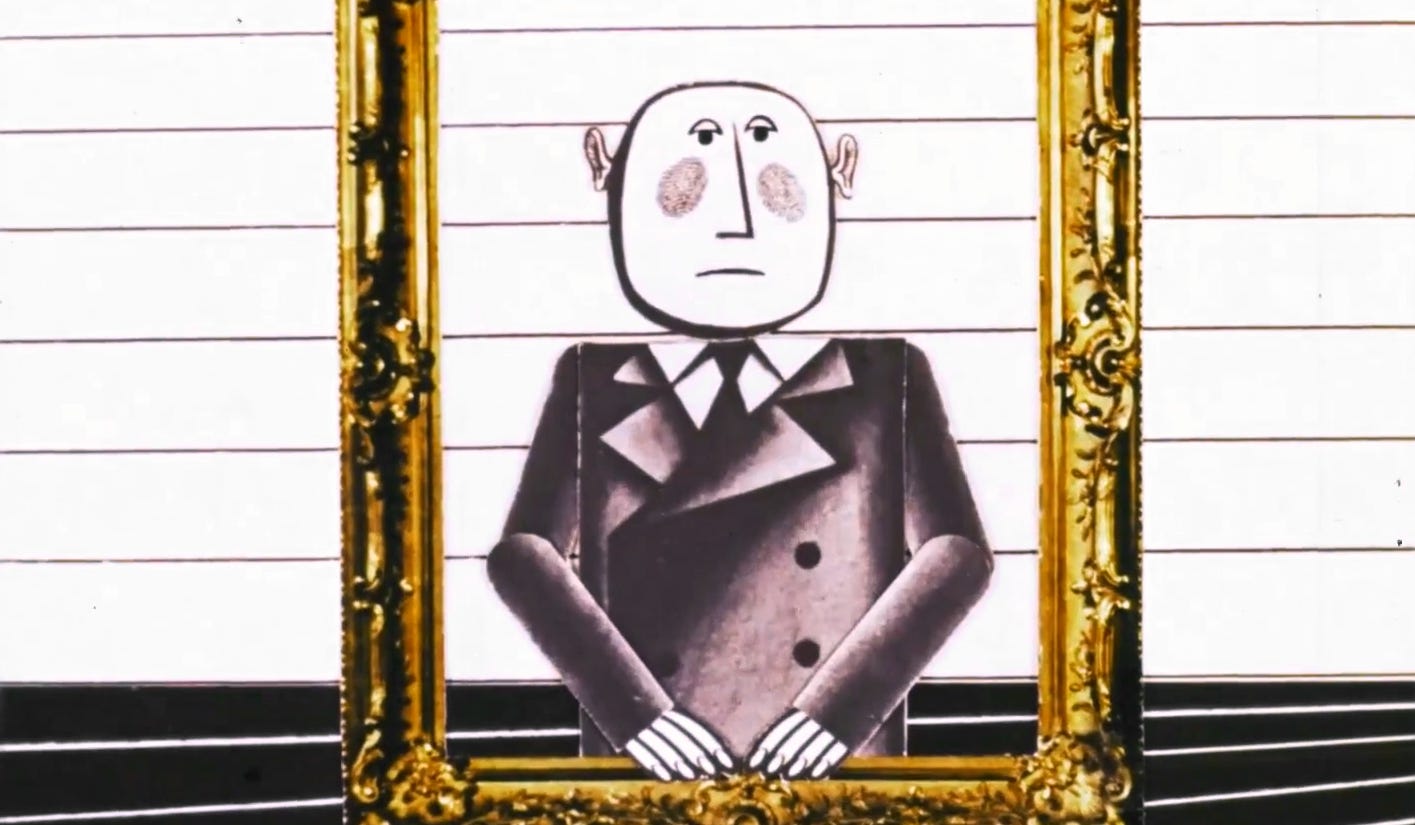How 'The Man in the Frame' Pushed Back
The story of Fyodor Khitruk's "oppositional" animation.
To animate in the Soviet Union was to deal with the censors. There was no way around it. Every animator answered, in the end, to one governing body — Goskino, the State Committee for Cinematography.
But Goskino didn’t just censor animation. Its cash and infrastructure allowed you to work. Really, it was your boss. The committee was often less “Big Brother” and more “Hollywood executive”: mercurial, prone to holding grudges and picking favorites, always bending or inventing rules. Stay on Goskino’s good side, and you could go places. Cross it badly enough, and it could blacklist you.
Animators across the USSR knew this. And most responded with daring, creative work that walked right up to the line of what Goskino would permit. Artists banded together, looked out for each other. There was a conspiracy of animators — a “mafia” of decent people, to quote writer Lyudmila Petrushevskaya.
In 2007, the great animation director Fyodor Khitruk told Novaya Gazeta:
We had to fight against the officials. And this was only possible together. I’m afraid that the [animation] community was based on opposing a common enemy. We, by the way, were fed by this enemy. But we knew what we were fighting for and against.
In the mafia of decent people, Khitruk was a ringleader. He’d joined Moscow’s Soyuzmultfilm in the 1930s, becoming one of its most renowned animators. In the early ‘60s, he began to direct. From his debut The Story of a Crime (1962) onward, he had the unusual distinction of being beloved by artists and respected by the state.
Khitruk knew how to operate around Goskino. He could stay on its good side better than most. “He was like a spy within the system,” Petrushevskaya said. “A spy working for the other side. But the other side — that was us.”
He used that to his and his colleagues’ advantage. Only Khitruk could’ve gotten away with The Man in the Frame (1966) to the degree that he did.
Keep reading with a 7-day free trial
Subscribe to Animation Obsessive to keep reading this post and get 7 days of free access to the full post archives.

